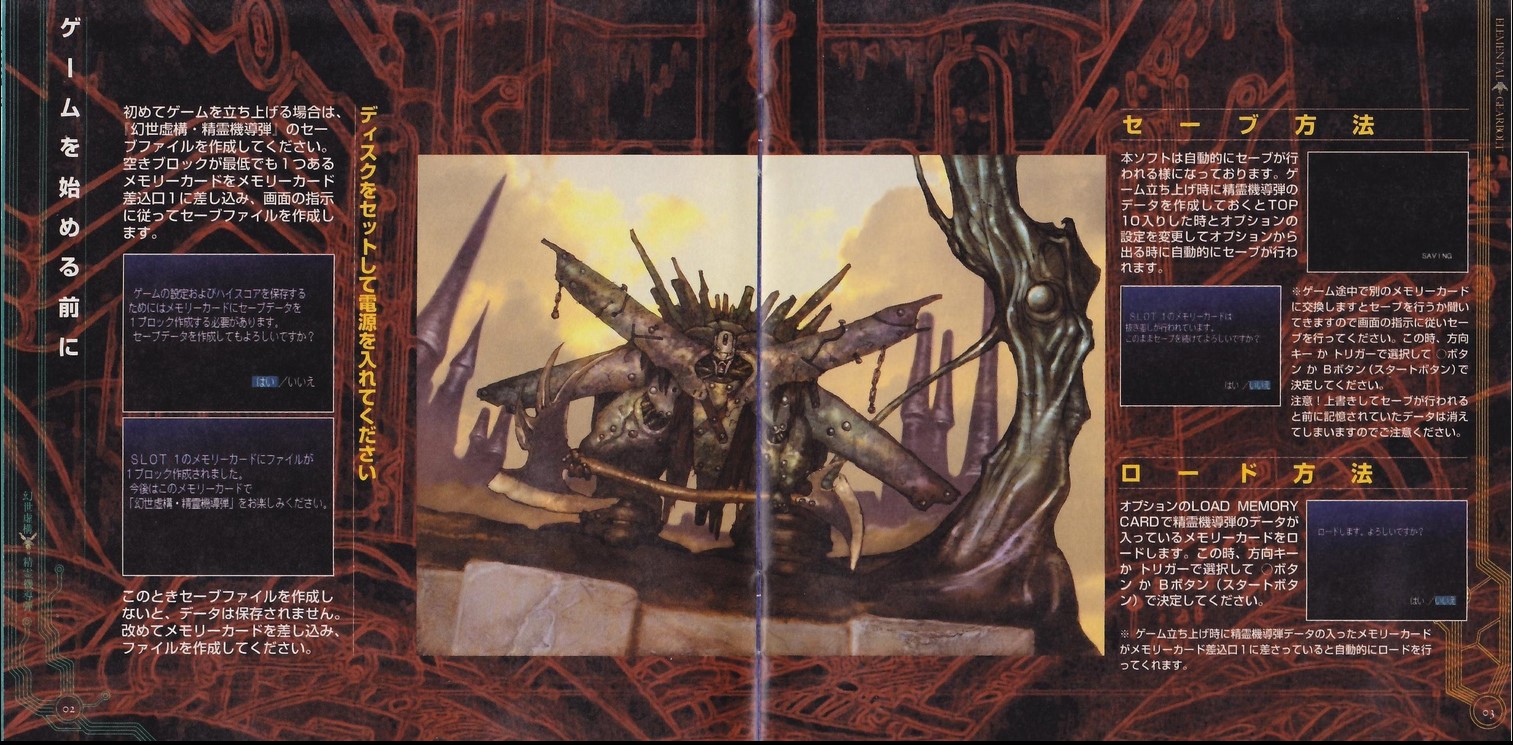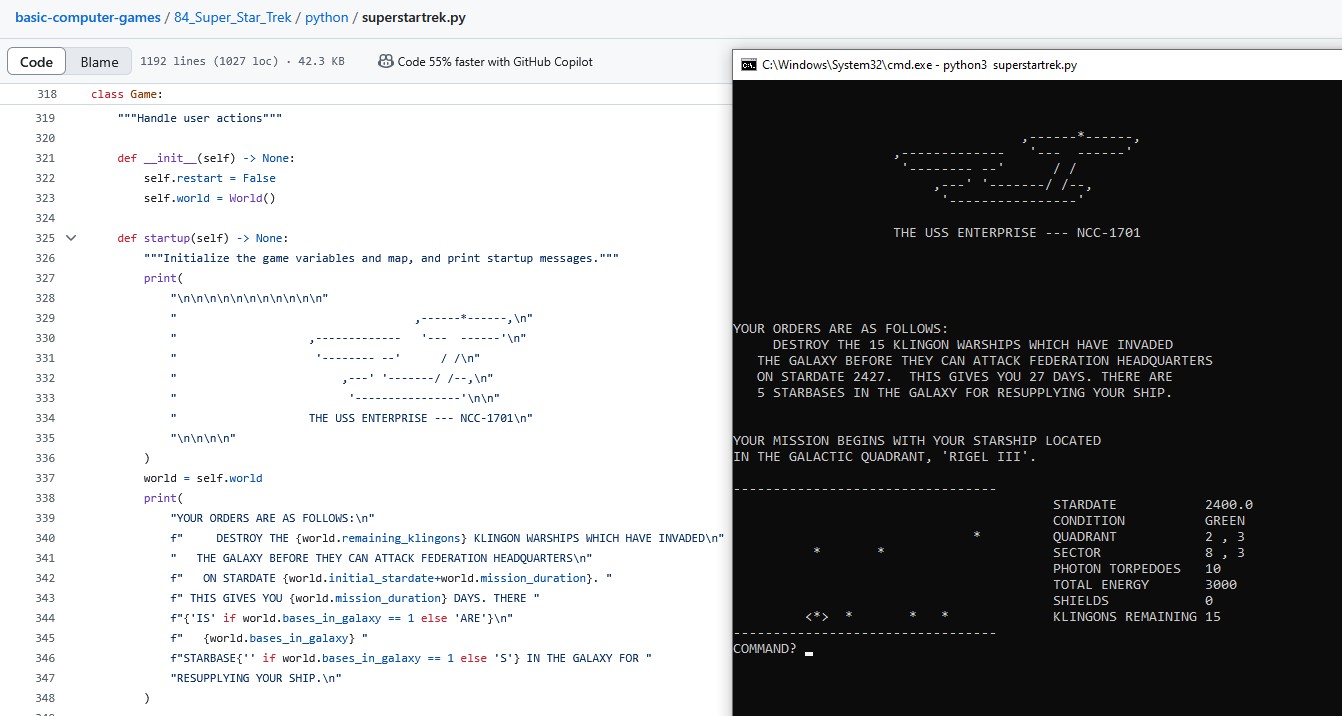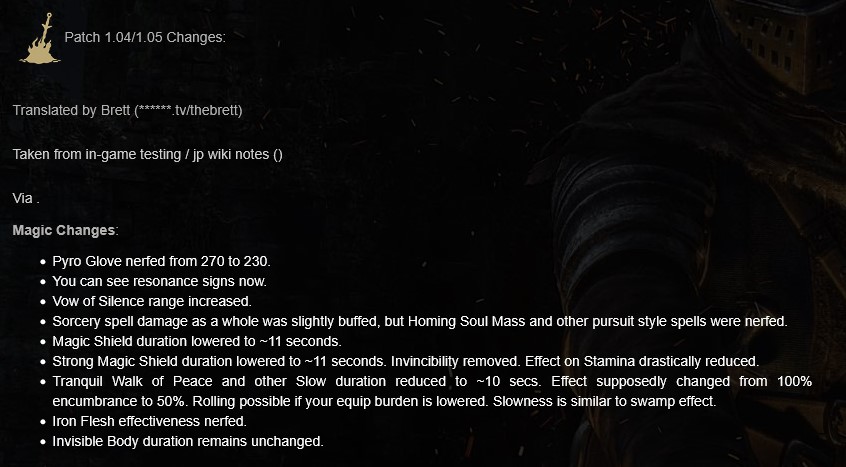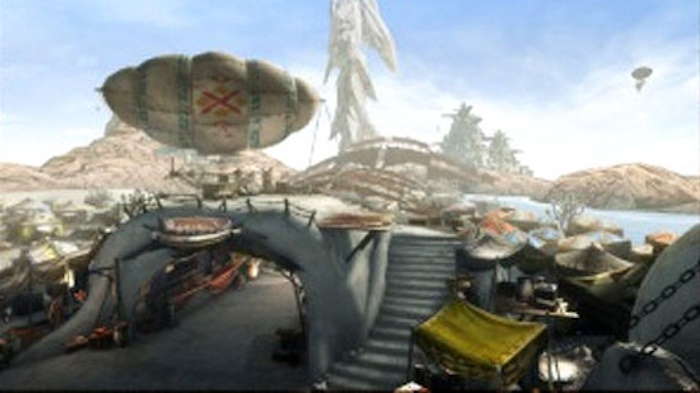Overlooked Issues in Game Preservation
A couple of weeks ago, my friend Ziad uploaded a loose video talking about the idea of games preservation, specifically in how people conflate “accessibility” (being able to purchase a game on a modern storefront) with “preservation” (the game existing perpetually in some form or fashion). It covered thoughts I’ve had on this issue for a long time, specifically that being in an almost purely digital medium, we’re at a distinct advantage when it comes to transferring copies of any work. Film and audio preservationists are fighting against analog mediums that degrade upon transfer and with age. Meanwhile, since games can be transferred with no downside1, creating redundancy by spreading copies of the game as widely as possible provides the best chance of preservation. I’m not holding my breath about letting publishers solve preservation anytime soon, as it’s rare that we get rereleases on modern platforms that match the originals, much less ones that actually improve upon them.2
There’s still some games in the throes of an actual preservation crisis. The Japanese i-Mode mobile service had many games available that still have not been dumped, although strides are being made on this front and for other similar services. However, in the usual mix of topics around preservation (the games themselves, availability, emulation vs. native ports, etc.) I wanted to highlight a few areas that don’t get quite as much attention.
Manuals and Other Packaging
 For my last poster, I used the art from the middle of this page within the Japanese manual for Elemental Gearbolt. The whole manual is filled with beautiful pieces such as these. [src]
For my last poster, I used the art from the middle of this page within the Japanese manual for Elemental Gearbolt. The whole manual is filled with beautiful pieces such as these. [src]
Last year I started doing occasional posters for local DIY shows, less because I have any artistic talent and more because I have access to an unsupervised Xerox at my office. I generally try to find interesting full-page scans from games and use them for cut-up fodder, and I had a particular Internet Archive account called BigManJapan that I looked through frequently. His page had all sorts of import instruction manuals, guide books, and art books (mainly for horror games) that I simply couldn’t find anywhere else. Come the beginning of this month, I get tasked with a poster and go to his account only to find that everything on it seems to have been taken down. Thankfully Internet Archive has plenty of similar accounts (I use this collection Manual Packs from the Manual Stacks as my big aggregate), but the possibility for archival materials to disappear or for the Archive itself to go down indicates how precarious of a situation this is.
Although the practice has become less prevalent as we move into an increasingly physical-averse future, games used to lean much more heavily on items on that came in their packaging. Printed covers and discs may contain unique art, manuals may convey information unavailable in the games themselves, and other “feelies” might go forgotten without photographic documentation. Without behind-the-scenes texts such as Book of Lost Memories or Hand in killer7, rich background for their respective games would be lost in design documents or passing conversations between the developers. Translating and scanning these extra elements helps preserve the context surrounding a game.
Source Code
 The classic terminal game Super Star Trek was distributed via BASIC code in David H. Ahl’s BASIC Computer Games, which has now been revived and translated into a variety of modern languages. [src]
The classic terminal game Super Star Trek was distributed via BASIC code in David H. Ahl’s BASIC Computer Games, which has now been revived and translated into a variety of modern languages. [src]
In the ’70s and early ’80s computer gaming scene, the code that formed the basis for a game got circulated around just as much as built executables, with players expanding and recirculating games continually. When files couldn’t be transferred, gamers instead passed around type-in programs, where the program in machine language (or preferably BASIC) were distributed in magazines or books. Many of our preserved early games come from these texts, such as the famous 1973 book BASIC Computer Games, which contains early command-line-driven titles such as Super Star Trek and Hamurabi (this git repo contains versions of all of these programs in modern languages). Many players learned how to code by playing these games and then tinkering with them. Having access to source code gives students these opportunities to see how games work under the hood and operate in someone else’s codebase, and it additionally makes these games portable to modern consoles with much less effort than emulation or reverse-engineering.
Staggeringly few modern commercial games have available source code, with one of the few scenes that valued open-source codebases being the first-person shooter developers in the ’90s. Many id Software, Raven Software, 3D Realms and Monolith Productions games have open-source3 code, along with other rare cases such as the Marathon series from Bungie or the engine from the early Serious Sam games from Croteam. In other cases, dedicated community members have undertaken pain-staking cleanroom reverse engineering to deliver byte-accurate codebases for games that will likely never receive proper source code releases, such as for many Nintendo 64 games over the past several years4, or with OpenGOAL for the Jak games. The recent advent of “static recompilation” (machine-driven decompilation, functionally) has opened up new horizons for this as well, hopefully expediting this process in the future. As similar projects continue to proliferate, gamers and programmers in younger generations may have the chance to learn using the most popular games of the generations before them.
Multiple Versions of Games
 These patch notes for the original Dark Souls from shortly after release buff the game in multiple ways, most notably by doubling the amount of souls gained for killing mobs. [src]
These patch notes for the original Dark Souls from shortly after release buff the game in multiple ways, most notably by doubling the amount of souls gained for killing mobs. [src]
As I discussed back in my article about how games age, games evolve over the course of their development, with snapshots of the game’s progress preserved in separate versions until release. Patches and updates continue to alter the game after official release, which may create noticably different experiences over the game’s lifecycle. In that article, I mentioned Elden Ring’s boss patches decreasing the challenge and propelling diehard players to get through the content in its original form. I’ll veer into the accessibility question here to wonder out loud: why don’t these games have some sort of patch select option?5 It’s not uncommon for me to hear about a friend trying a 1.00 (or close, 1.03 is before all of the balance changes) challenge run for Dark Souls in the same vein. On PC applying particular patches may be less of an issue, but on console, trying to specify a particular version of a game can be nearly impossible. In both of the above cases and in many others, the existence of a game as an evolving work (much as how the early hobbyist programmers conceived of it) is scrubbed away in favor of the fetish of a fixed product, hence why it can be easy to lapse into the idea that games are static entities.
Certain sites have taken on this niche, such as Hidden Palace, which not only covers source code and packaging material as discussed above but also developmental versions of games. Many prototypes are still floating out in the wild either unknown to their owner or in the hands of a collector; there was an old Frank Cifaldi post where he posted about his verification process for these old prototypes for collectors (including generating publicly available checksums so that potential future uploads could be verified), which ended up getting him a fair amount of flak over the collectors being unwilling to openly distribute said prototypes. For versions after the original release, preservation has likely already occurred, but accessing the game in a given state may require a lot of tinkering. Some companies have been better about this than others: Paradox Interactive provides methods to access earlier versions of their games both for standalone releases and for Steam. Other companies should consider this model (or even just in-game balance toggles) to keep older versions available for enthusiasts.
Online Worlds
 Loc Lac City in Monster Hunter Tri distinguished itself from the homely hub Moga Village through its scale and bustling player base. This fostered roleplaying amongst its users as seen in the source link, helping players immerse themselves in the role of a small-town hunter meeting up with more experienced peers in the big city. [src]
Loc Lac City in Monster Hunter Tri distinguished itself from the homely hub Moga Village through its scale and bustling player base. This fostered roleplaying amongst its users as seen in the source link, helping players immerse themselves in the role of a small-town hunter meeting up with more experienced peers in the big city. [src]
Even if the code and assets for a game have been preserved, they might not be accessible when playing the game offline. The Monster Hunter community has struggled with this for years, as the four of the early entries in the series (the original and its standalone expansion G along with follow-ups Dos and Tri) had hubs, monsters, and virtually all of the higher difficulty quests locked behind online access. Within the last couple of years, fan projects have led to reverse-engineered servers for each of these that players can use just as they did during the game’s original lifecycle. These victories never come easy; they rely on the joint effort of multiple projects targeting different aspects of the network stack (which often has proprietary elements per console) to create a full reimplementation. In some cases it may even expand upon the featuers of the original, such as the Phantasy Star Online fan server schtserv adding crossplay across GameCube, Xbox, and Dreamcast.
This gets back into the accessibility versus preservation idea in a more extreme manner: the ability to play content in a game is an accessibility issue, but it’s one that becomes much more dire when it’s a question of whether the means even exist to access the content at all. It also relates directly to the preservation of the server software itself, which rarely ever makes it into the public’s hands. A reverse-engineered version may be the only practical solution to ensuring the preservation of the entire game experience. This also includes efforts by teams such as Dreamcast Live, who provide fan servers not only for online multiplayer but for access to leaderboards and downloadable content that would be otherwise inaccessible. Each of these games illustrates the extra mile that has to be done for some games to be preserved, where additional software that enables the game to operate to its fullest potential gets completely lost to its users.
What Do I Do About This?
I’m not going to pretend like I’ve contributed to any of these in any material way, even though I likely should. I have a background in C and assembly that should make me perfectly eligible to help with source code documentation or modding efforts, and yet I’ve never done much with it (certainly nothing publishable). Regardless, being able to recognize your abilities is the first step. It might be something as simple has owning a high-quality scanner and having the cash to buy manuals on auction sites. Putting those abilities to use even for just a single thing can help aid the overall state of games preservation.
Even if you can’t or don’t contribute, I also wrote this article just as a reminder of all of the hard work that goes into games preservation behind our backs every day. It’s easy to fall into the trap of wondering why the developers or publishers themselves rarely do anything about it, and as hard as it is to stomach, they have very little incentive to do anything useful to aid preservation other than dumping their old games on new platforms when it will make a buck. True preservation and accessiblity will never be profitable or attractive to those whose money comes from restricting access to their products, and it will always require the work and dedication of many people collaborating out of passion. You may already be cognizant of all of the facets of games preservations I’ve discussed above, but if you aren’t, go ahead and enjoy the fruits of everyone’s labor. Look through an obscure art book, or hop on an online server in a game you’ve never tried multiplayer in before. If no one is enveloping themselves in and learning from all of this material we’ve preserved, what’s the point?
-
The one downside is the law, but I’m not really looking to debate the ethics of piracy and copyright with anyone. I don’t have a particularly normal background with piracy; I tried my first ROMs as a child when my dad would give me CD-Rs full of 3rd through 5th generation titles, so it was normalized for me at a young age. ↩︎
-
Also like Ziad said in the video, I’m not interested in evangelizing to people who are playing inferior rereleases. Not for cynical reasons, but just because I don’t think it’s generally all that important to the artistic experience if you’re not already in the weeds on these things. When it’s not a full remake and new players are coming away completely blown away by the experience, it’s not like they somehow missed an extra 5% of quanitized aesthetic exhilaration because the backgrounds were upscaled poorly or some licensed tracks were missing. Someone in the comments for the original video went on a tangent about Resident Evil 4 not being available in its original form in Korea. That’s fine; play one of the HD rereleases! I did every single full run I’ve ever played of RE4 on the PS4 version, and I still adore it. ↩︎
-
Some of these are just “source-available,” which functionally means that modification and/or redistribution of the code may be in a grey area, but that you can at least view the code if you wish. ↩︎
-
I had a student a few times across various classes I TA’d and taught that showed me an early version of the SM64 reverse-engineering project; I remember in late 2019 mentioning to him that porting the game to Dreamcast might be a fun Christmas break project until I dug in a bit and remembered I had virtually no graphics API knowledge of any kind and that the only way I’d be even vaguely close to being able to do such a project on my own is if I waited on an OpenGL port. Anyway, a couple years later that student discovered a Kirby 64 cheat code for instant 100%! Small world. ↩︎
-
My friend Reyn mentioned to me shortly after I published this that Armored Core actually did have this feature in its 4th and 5th generations. So what gives, Fromsoft? ↩︎
Comments
You can use your Bluesky account to reply to this post.